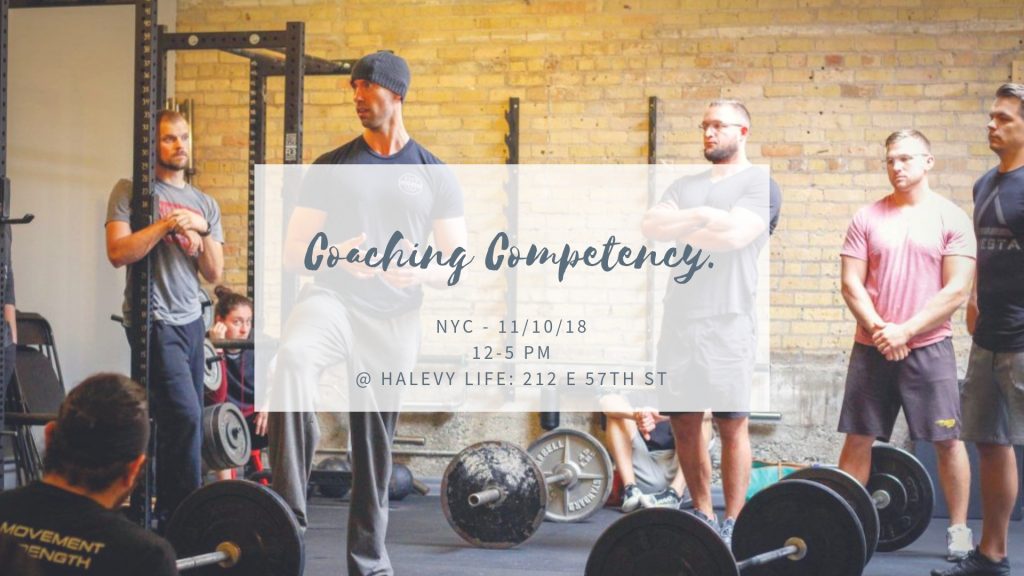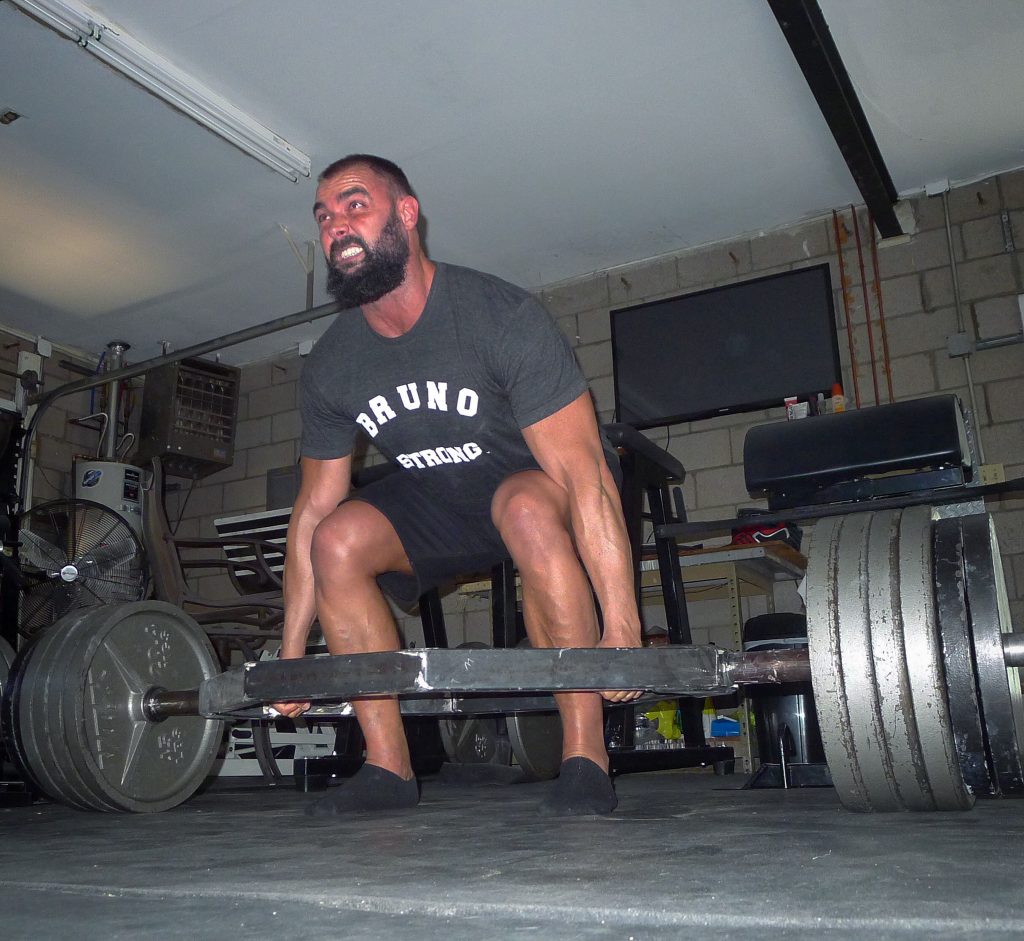Whenever I get the chance to listen to other coaches speak or to watch them in action, I’m always locked in. I sit with bated breath and intense concentration as I listen to him or her’s train of thought on everything…
…in addition to listening to how they cue certain exercises and coach up their clients and athletes.
Mike Robertson is one of those coaches. He’s high on my “bring a notebook, bring a pen, shut the eff up, and listen” list.
I remember reading his articles on T-Nation back in the day and thinking to myself “I’m totally picking up what he’s putting down. Samsies!”
And when I finally met him in person, when he came to Connecticut for a weekend to stay with Eric and I as he and Eric were planning Magnificent Mobility (watching it now they both look like they’re 16), I just knew he was someone I’d stay in contact with for years to come.
And I have.
Mike and I have been good friends for over a decade now, and he’s still someone I learn from and respect a ton. Plus, he has impeccable taste in old school hip-hop music.
Mike teamed up with one of the most ginormous human beings in the world, strength coach Joe Kenn, to film the Elite Athletic Development 2.o seminar.
It’s amazing.
But more to the point: it’s a 12 DVD set where Mike and Joe talk about program design, periodization, exercise technique, and how to develop your own training philosophy (and what they actually means).
It’s a sound investment for any personal trainer or coach to add to their continuing education arsenal. And, it’s on SALE this week at $100 off the regular price.
Mike was kind enough to take some time to talk some shop and answer some questions. Enjoy!
TG: Joe Kenn is a massive human being. Is his gravitational pull more powerful than the moon?
MR: You know back in the days when he was powerlifting, they called him “Big House” for a reason.
But ever since I’ve known him, he’s been pretty damn lean and pushes himself in the gym. And with his injury history it’s impressive to see him do what he does on a day-to-day basis. Respect.
TG: Elite Athletic Development 2.0 is going to entice a lot of athletes due to the title. But after watching the videos I know full well that the bulk of the information applies to your every day gym rat/meathead/goddess too.
Can you elaborate on why “training like an athlete” will help the average gym goer?
MR: Great question, and this is really at the core of my overall philosophy. In fact, I tell everyone who trains at IFAST that when they step in our gym, they are going to be the best athlete they possibly can.

I think most people get too focused on the singular quality of “strength” – and trust me, I get it.
I competed in powerlifting for many years, and in a lot of ways, still think of myself as a powerlifter.
But I also think you can make training infinitely more fun, and your body much healthier, when you focus on all the qualities of athletic development.
An athlete has to be fast, powerful, strong, conditioned and mobile. If he/she lacks any of these qualities, then their performance will suffer.
If you train all of this in the gym, you’re going to be pretty darn awesome in real life, so it just makes sense to me.
TG: I couldn’t agree more. It amazes me how many adults have lost the ability to do something as simple as skipping.
Your R7 System is pretty fucking brilliant. One thing I feel is hindering many fitness professionals is PRI (breathing drills). I know you and the rest of the coaching staff at IFAST are in the same boat as us at CSP. We both find a lot of efficacy in it, we both use it, but we also know that people need to freakin train!
Breathing drills, in simplest terms, helps “reset” the body. Can you briefly explain this?

MR: Yeah I’m not shy about the fact that I love PRI, but like anything, if you want to learn more about it go the source.
Too often, people learn about a system via the zealot who bastardizes the system, and then assume that everyone who uses the system “does it that way.”
Not true. But I digress…
To make this incredibly simple, too many of us struggle to exhale, and thus live in a position of “system extension.” To see what I mean, try this:
Take the deepest breath in you possibly can. If you’re like 99.9% of the awesome people out there who strength train, then chances are you extended your back to a degree to get the air in.
So this system extension isn’t an awful thing when you’re trying to fun fast, jump high, or lift heavy things, but it’s also associated with the sympathetic response (fight-or-flight).
When you’re training, this isn’t bad – but so many of us struggle to get out of this and we’re locked in sympathetic mode all the time!
I could go really deep into this, but the inability to breathe (and more specifically, exhale) never allows us to shift the parasympathetic dominate (i.e. rest and digest – RECOVER).
Breathing, and the ability to not only exhale, but to inhale from an exhaled position, can help reset our body. For training purposes, it can open up mobility in the hips and shoulders by improving core stability and position.
But the even bigger benefit is the fact that by doing this at the end of a session (or before bed), you can really shut your system off and kickstart the recovery process.
I think that’s the biggest benefit of all this – we love to talk training, but proper breathing starts the discussion with regards to proper recovery.
TG: YES! Thank you. If I could hug you right now I totally would.
Deadlifts. You know I have to pick your brain on this. With any movement I tend to take more of a “less is more” approach when coaching it. I know you feel the same way. Can you give us your top 3 coaching cues/tips for the deadlift?
How about the squat?
MR: Absolutely man. I’m actually trying to streamline all this so people are getting a similar message across movements.
So these three would work for both the squat and deadlift.
1 – “Exhale, inhale, brace.”
The exhale sets proper position, the inhale allows you to breathe 3D (into front, side and back of your core, and then the brace seals the deal.
2 – “Feel the whole foot,” or simply, “whole foot”
I think this is a big one, and it cures damn near everything.
If someone gets too far forward, it gets them back towards their heels.
If they get on their heels, it gets them back on their forefoot.
And if they have a tendency to supinate or pronate, it cleans up frontal/transverse plane issues.
Note from TG: give THIS post a read on Active vs. Passive Foot (or “whole foot” as MR alludes to).

3 – Push
This one is simple – if I cue someone to “push” then we get balanced (and well-timed) movements at the hip and knee.
What you see all too often is that the hips shoot up, and puts the back in an awful position to finish the lift.
By cuing someone to push, it improves timing and fixes a lot of stuff.
TG: Conditioning. It’s a double edged sword. Where do you feel most athletes (and average gym goes) go wrong with it?
MR: I think there are two main camps out there:
1 – The people that do none, ever, and
2 – The people that only go balls out, all the time.
The people that do none are doing themselves a disservice – it’s negatively impacting their recovery, health, and ultimately, their quality of life.
But people that go balls out all the time aren’t much better. They’re essentially driving themselves into sympathetic overload, and then wondering why they can’t recover, why they aren’t making progress, or why they’re always injured.
I think there’s definitely something to be said about the middle of the road here. Not everyone needs to be as conditioned as a soccer player, and I’m not saying you need to go out and train like an endurance athlete, either.
But a little bit of true aerobic development can go a long way.
TG: Speaking of aerobic development, like yourself I’ve become more and more aware that I was a tool bag for dissing steady state aerobic work for so long in my early years as a coach.
Can you explain to my readers why implementing more of it will help them in the weight room?
MR: Great question, and yes, I absolutely made this mistake early-on in my career.
We talked about sympathetic overdrive above – and high intensity (anaerobic development) is tied to sympathetic dominance.
On the other hand, if we want/need the able to access our parasympathetic nervous system, then we can use low-level aerobic development to help stimulate that process.
Now here’s the cool thing – that aerobic development will help us in several ways:
- We’ll be able to do more (and recover from) more training volume,
- We’ll recover faster in between sets,
- We’ll recover faster in between training days,
- The improved parasympathetic drive will allow us to truly shut our system off, which will improve systemic recovery.
It may sound counterintuitive, but I feel as though improved aerobic development can do a lot for us both in and out of the gym. That’s why I’m such a huge proponent of it these days.
TG: Legit answer, thank you.
Do your low intensity aerobic work everyone!
Finally, movies: Favorite ones you’ve seen lately?
MR: Moment of truth here – I’m jealous of your ability to see new movies every week. I was a huge movie buff as a kid, but family, work, and life just seem to get in the way!
These are a bit random, but here are some of my recent faves:
Ex Machina – Defiinitely a cool plot, and I love sci-fi so I thought it was cool.
Jiro Dreams of Sushi – Joe Kenn told me about this one. It’s a documentary but it shows what it takes to be truly excellent at your work.
And just to show how totally out of the loop I am, I have DVR’d V is for Vendetta – just looking for time to watch it!
Two of the best strength coaches in the biz sharing with you what’s helped make them successful and how they go about making people into BEASTS in the weight room (and on the field).
It’s quite impressive to listen to Mike and Joe talk. And all for the price of what it would cost to go to a nice steak dinner for two.
Seems like a no brainer to me.














